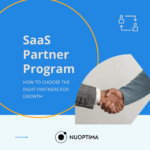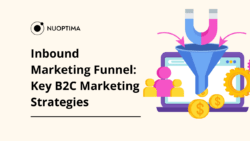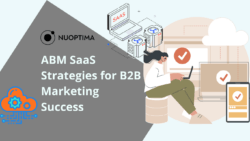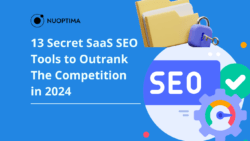In 1994, Jeff Bezos started Amazon, selling only books. Within a month, his online company made over $20,000. Three decades later, Bezos is one of the wealthiest people on the planet, and Amazon is making nearly $2 billion daily.
A key tool for Amazon’s growth was customer segmentation. With nearly 70% of its revenue [1] coming from US-based customers[1], Amazon allocates much of its marketing budget to national campaigns, event sponsorships, and regional ads.
SaaS companies can also significantly boost profits from customer segmentation. Today, we’ll discuss SaaS customer segmentation, why you need it, and how to implement it properly.
What Is SaaS Customer Segmentation?
The process of dividing a SaaS company’s customer base into groups based on shared characteristics, needs, and behavior patterns is called SaaS customer segmentation. It allows SaaS companies to tailor their messaging better, prioritize resources, and refine their sales process.
Segmentation allows companies to anticipate customers’ reactions to marketing campaigns and messages way before launching them. Consumers who interact with your SaaS company leave a trail of actions behind them. Using data science, you can examine their behavior and formulate content that will resonate with them and consumers with similar preferences.
Emergen Research has discovered that roughly 80% of companies [3] that use market segmentation report increased sales. That’s because customer segmentation allows companies to target specific people with the right content at the right time.
Customer segmentation will help you understand your customers’ usage patterns, pain points, and preferences. It will also show that you’re willing to go the extra step to meet every customer’s unique needs. According to Salesforce Research, 7 out of 10 consumers [3] say that having a deeper connection with a brand positively influences their loyalty.
5 Benefits of SaaS Customer Segmentation
By segmenting customers into small groups, businesses can gain valuable insights into the preferences and needs of each group. Here are a couple of key benefits of SaaS consumer segmentation for B2B businesses:
1. Improved Customer Experience
One thing to keep in mind is that targeting B2B customers differs greatly from targeting B2C ones. If you read our guide to the B2B SaaS customer journey, you probably know all about it.
While in the B2C sector, you’re targeting either individuals or families, in B2B, you’re targeting organizations—which means you’re dealing with multiple people in the decision-making process. On average, four people are involved [4] in making decisions.
Unlike regular B2B consumers who make more “emotional” purchasing decisions, B2B buyers tend to be more deliberate. With enough research, you can determine the driver of their purchase needs and motivate them to buy your products or services.
And if you want to know more about the differences between the B2B and B2C sectors, make sure to watch a video from our CEO and founder, Alexej Pikovsky about it.
2. Effective Marketing Campaigns
B2B products are usually made to address really, really specific issues and needs. Moreover, each product is rarely used in isolation. More often than not, SaaS products are part of a larger system.
However, you can refine your buyer personas, create content, and deliver them through the right channels. Doing a simple thing like segmenting and filtering your email list will lead to more effective marketing campaigns.
A 2017 Mailchimp study of over 2,000 users [5] showed that segmenting email recipients leads to:
- Over 14% more opened emails
- 200% more link clicks
- 9% lower unsubscribe rates
3. Better Upsell Opportunities
As you’re aware, B2B sales cycles are infamously long. You have to win over multiple stakeholders, and the organization usually has to invest a lot of money and time into the new product. That’s why tapping into your existing customer base and investing in B2B SaaS customer retention strategies makes more sense than chasing new buyers all the time.
Research [6] shows that the probability of selling a product to an existing customer is somewhere between 60% and 70%. On the other hand, if you want to sell a product to a lead, your chances are 20% in the best-case scenario.
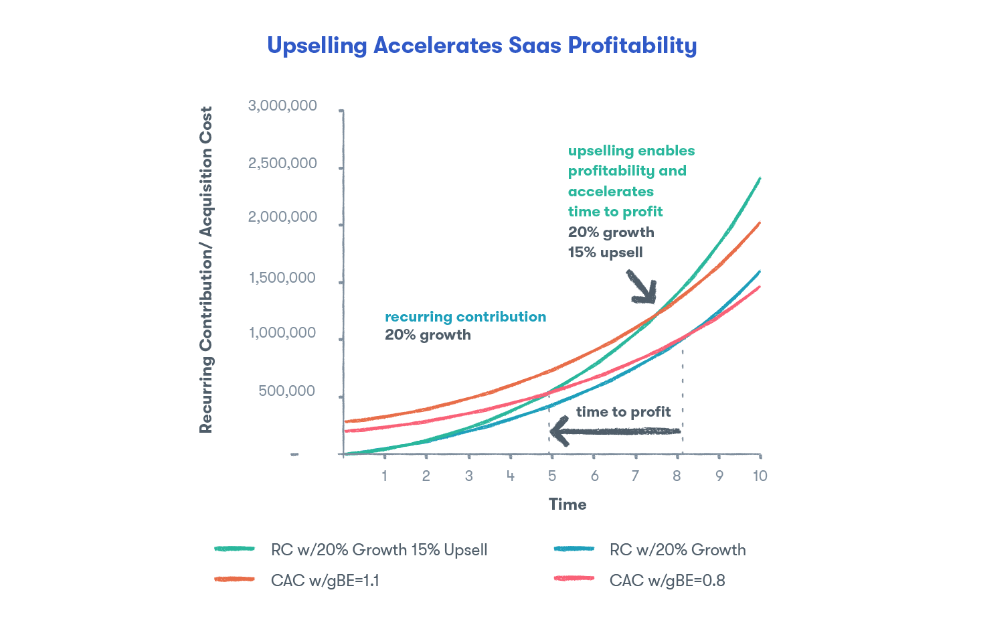
Your existing customers already have faith in your product and your SaaS company as a brand. Convincing a previous customer to upgrade their plan is much easier than convincing a brand-new organization that they should give a product they’ve never used a chance.
That’s why finding out which customers are more likely to upgrade their plans and offering special deals to them will make them feel… for lack of a better term, special.
4. Enhanced Product Development
In 2022, companies worldwide have spent $2.5 trillion [7] on research and development. While it is reasonable to allocate a healthy portion of your budget to P&D, small companies simply don’t have unlimited budgets for large enterprises. That’s why small to mid-sized SaaS companies must be smart about spending.
By segmenting customers, you can develop new and upgrade your current product so they can directly solve issues your consumer base has. By collecting and assessing consumer data, your company can:
- Prioritize the development of the most promising aspects of your product.
- Improve the overall efficiency in the product development process.
- Increase the chances of the product actually succeeding in the market.
5. More Precise Pricing
As we explained earlier, keeping current customers is much simpler and more cost-effective than acquiring new ones. Customer retention has 2X more, and lead monetization has 4X more impact on your bottom line than customer acquisition, according to HotJar research [8].
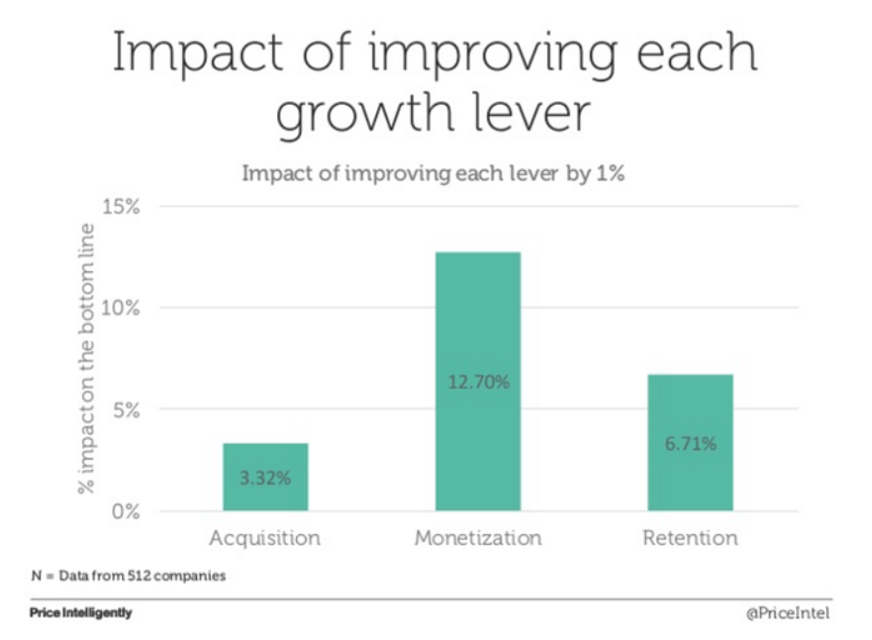
When you’re looking for ways to improve your pricing strategy, you can’t just consider prices that will attract consumers in your niche. You need to consider keeping your customers loyal to your SaaS platform by delivering sustained value over time.
Having a feature-based pricing model will appeal to different segments of customers. For instance, a SaaS marketing software company can have pricing tiers with increasing levels of functionality for social media, analytics, and more options.
Types of Customer Segmentation in SaaS
One of the things you need to realize about customer segmentation is that there is no one-size-fits-all solution. Depending on what software you’re developing, your target audience, and what type of brand you’re running, one method of segmenting customers will be more effective than others.
To help you find the best segmentation method for your SaaS company, here are some of the most popular ones in the B2B sector;
Firmographic Segmentation
Grouping businesses based on things like company size, yearly revenue, or number of employees is what is known as “firmographic segmentation.” Just as B2C companies use demographic segmentation—age, gender, occupation, etc. to describe their ideal customers, B2B companies need data that describes businesses.
Firmographic data can be collected from a wide variety of sources for little to no money. Things like business names, industry categories, and estimated revenue are all public information and can be collected easily and still provide valuable insights. Conducting client surveys is another cost-effective way of collecting up-to-date data that can be used to sell and upsell products.
One problem with firmographic segmentation is that it only provides surface-level information, which doesn’t give you a lot customer insight. Nonetheless, firmographic segmentation offers excellent ROI that there’s no.
Firmographic Examples:
- Industry classification such ash SIC (Standard Industrial Classification) and NAICS (North American Industry Classification System)
- Business funding and yearly revenue
- Company age or business tenure
How to Use It:
- By identifying the industry a specific client operates in, you can develop industry-specific use cases that cater to them. That will help establish your deep knowledge of the industry and help build relationships with clients.
- You can use firmographic data data to develop pricing strategies. For example, you can offer flexible pricing options to startups and small companies, while pushing premium pricing packages for big corporations.
Geographic Segmentation
This type of market segmentation is pretty self-explanatory—geographic segmentation groups customers based on the city they’re based in, the state where they operate in, and the official language they use, to name a few. Six factors used for creating customer segments include
- Location
- Timezone
- Climate and season
- Cultural preferences
- Language
- Population type and density.
Just like firmographic, geographic data also is easy to gather, implement, and can be highly effective.
As an example, let’s take a company selling work wear. If they want to sell winter clothing, they will look for companies that operate in regions with colder weather patterns. That saves companies money and prevents them from targeting regions where there’s no need for such products.
Geographical Examples:
- Country, state, or city the company is based in
- Language and cultural preferences of company leaders
- Address of company headquarters
How to Use It:
- Customize your website content—language and currency choice, for example—based on the customer’s geographical location.
- Highlight features popular with users in their region to create a targeted email company based on the recipient’s country.
Value-Based Segmentation
Value-based, also known tiered-based segmentation is technique that categorizes customers based on the value they bring to your business. It is a more advanced segmentation technique, because it involves understanding metrics like customer lifetime value, acquisition costs, and lead quality, to name a few.
You can apply value-based segmentation to your top customers and see how valuable they are to your organization and whether or not they’re worth targeting with more effort. As an example we can look at the Delta Airlines’ SkyMiles [9] . The program offers elite members perks like priority boarding, lounge access, and bonus miles, encouraging loyalty and higher spending.
Value-based Segmentation Examples:
- Software quality, speed, and efficiency
- User-friendliness and convenience
- Availability and effectiveness of customer service
How to Use Value-based Segmentation:
- Tailor marketing messages based on the biggest driver of value. If your software is quick, make sure to have a segment talking about it in your promotional material.
- Use this data to create pricing tiers by identifying customer segments willing to pay for a bare-bones version of the software.
- Set a higher price for a product with higher levels of customer support and more premium functionalities.
Needs-Based Segmentation
Unlike value-based segmentation, which focuses on a customer’s economic value, needs-based segmentation groups customers based on their specific requirements. Basically, you’re grouping them according to benefits they’re looking for from a service or product.
To effectively use needs-based segmentation to your advantage, you need to combine it with descriptive data. There are two approaches to this:
- Descriptive-first: Start by grouping customers using descriptive data like firmographics, and then, identify the key needs of each group.
- Needs-first: You can first identify different needs within your customer base. Then, analyze the customer information you have – for instance, company size or geographical location – to find which descriptive data best matches each need.

Since most companies have multiple needs, you should definitely consider dividing organizations into groups based on their highest priority need.
Needs-based Examples:
- The level of customization the company needs.
- Need for a specific price or payment options.
- Need for customer support.
How to Use It:
- You can create marketing campaigns that showcase the core functionality of your product.
- Organize virtual or physical workshops that help people understand how to use your software optimally.
- Write professional case studies or white papers on a problem relevant to your niche and use them to promote your software as a solution.
Technographic Segmentation
Segmenting customers based on their technology use. You can segment the customers based on their technical literacy or adaptation of a specific software. It allows you to target specific customer groups that are likely to be interested in your product.
Techographic segmentation shows you the preferences and interests of your customers, which you can use to inform marketing. Once you know what systems, online subscription services, and devices your core customers use, you can create marketing campaigns for same users.
For instance, Uncapped is a leading capital provider for companies in EU, UK, and US. They’re used by a large number of small-to-midsize SaaS companies that are still developing.
A lot of these companies need leads, clients, and revenue growth strategies. That why we at NUOPTIMA, market our services to Uncapped users to we can create mutually beneficial relationships.
Technographic Segmentation Examples:
- Software the company is already using
- Adaptation preferences (early vs. late adopters)
How to Use Technographic Segmentation:
- You can scrape your customer’s website or use a third-party tool to look what tools or software they use. That way, you can see if your product is compatible with their systems.
- Alternatively, you can survey companies on type devices their employees use and online service they subscribe to. You can then segment customers based technology usage patterns.
How to Segment Your SaaS Customers Properly
Now that you know segmenting methods, it’s time to learn how to execute your SaaS segmentation strategy.
Here are the steps you need to take:
Use Welcome Screens to Collect Data
For most apps, the average first-day retention rate is between 8% and 28%,[10] which is why so many apps use welcome screens nowadays. While these numbers are higher in the B2B sector, the fa
A welcome screen refers to an initial series of pages – or screens – that are displayed when a user first lances an app. It’s main purpose is to:
- Introduce a user to the app’s features and core functionalities;
- Familiarize a user with the app’s user interface;
- And help the company collect user data easier.
The last one is most important to us. By collecting data, you can create buyer personas and analyze them as soon as they start using your platform.
You can use a tool like UserGuiding to collect data and give the users guided tours, education content, and support features that help your customers understand how to use your platform.
Track Customer Engagement
Is your SaaS platform engaging to your customers? What features do they interact with the most and least? How many times per day they use the app and how much time they spend using it? Answering these questions can
How users interact with your SaaS says a lot about their likes and dislikes.
Using analytics software like Akita or Mixpanel, you can can collect behavioral data from your users and answer all of the questions above.
What can all of this really help you with? It allows you to see if your core features are working properly.Customer engagement will enable you to segment users based on their interaction patterns and satisfaction levels.
That way, not only can you identify areas for improvement in your app, but also see what features drive engagement. You can, subsequently, promote these features to the users who can benefit from them but aren’t currently using them much.
Monitor Behavior Through Custom Events
Behavior is an important part of segmentation because it allows you to know how certain features and actions impact user conversions and retentions.
You can keep track of user behavior through events.
But what are these “events” in the first place? Events are specific actions your users perform. Basically, ever action one of the users takes when interacting with your SaaS is an “event.” That includes clicking links, using different features, and interacting with in-platform content.
Using a platform like Userpilot, you can:
- Monitor the activities of your users and track them through custom events.
- Set and track KPIs like free trial completion, onboarding completion, and churn rate.
- Segment customers in categories like “at-risk of churn” and “high-value but high-maintenance” among others.
Use In-App Surveys to Collect Feedback
You can use dozens of ways to collect data on your users… Or you can simply ask them a couple of questions and let them tell you what they think about your app and what they want.
Asking direct questions is a great way to collect some data your organization needs for accurate customer segmentation. For instance, you can use Net Promoter Score (NPS) surveys to see whether or not customers are satisfied with your brand.
NPS shows you how likely a customer is to recommend your company and product to someone. Based on the answers, customers can be divided into three categories:
- Active promoters
- Passive customers
- Detractors
You can also have follow-up questions to see why the customer feels the way they do.
For surveys, you can use an app like SurveySparrow to find out what customers think about you, segment them better, and use the knowledge to improve and grow your business.
How Nuoptima Can Help With SaaS Customer Segmentation
Whether you were aware of it or not before, now you certainly know just how B2B SaaS startup marketing and customer segmentation can help shape your marketing and business strategy. If you’re not collecting data on your customers and making use of it, it’s like you don’t have any customers at all.
Have you ever considered doing customer segmentation? Are you not sure where to start? Here at Nuoptima, we can provide some assistance. Our team can help you with everything from SaaS subscription management to B2B SaaS analytics.
Book a call with our experts today and take your SaaS strategy to the next level.
Conclusion
Your average SaaS startup spends more than 90% of the first-year average contract value [11] on acquiring new customers. That means, if a customer stops using the SaaS platform after 11 months, the company loses money on them.
But SaaS customer segmentation can help you avoid such losses.
By carefully collecting customer data and analyzing it, you can know which types of customers to pursue and which ones to avoid. That is the only way to ensure that your marketing efforts are fruitful and your return on investment is positive.
FAQ
For SaaS companies, customer segmentation involves categorizing customers to tailor your marketing messages and deliver personalized services. In the B2B sector, some of the more common methods of SaaS customer segmentation include:
- Firmographic Segmentation – Grouping customers based on their size and revenue.
- Geographical Segmentation – Customer categorization based on their location.
- Needs-based Segmentation – Segmenting based on the needs/goals of customers.
- Value-based segmentation – Customer classification is based on the value they bring.
- Technographic Segmentation – Classifying customers by their technology usage.
You can segment your customers in hundreds of different ways. However, the four basic customer segmentation are geographic, demographic, psychographic, and behavioral.
To segment SaaS customers, your company needs to take the following steps:
- Define your segmentation goals – Determine what you want to achieve with customer segmentation. Make sure to set relevant KPIs to measure goals.
- Gather customer data – Next, collect as much customer data as possible through various channels.
- Execute segmentation and analysis – Once you segment your customers, create strategies for each group and monitor your performance using KPIs.
There are four B2B market categories:
- Producers – Organizations that buy goods and services and use them in their production of goods and services.
- Resellers – Companies that buy finished goods and sell them to other customers without any modification or transformation.
- Governments – Local, state, or federal organizations that buy goods or services to support their operations.
- Institutions – Educational, non-profit, or healthcare organizations that buy goods to serve their missions.
References
- https://www.statista.com/statistics/672782/net-sales-of-amazon-leading-markets/ [1]
- https://www.linkedin.com/pulse/market-segmentation-how-identify-target-your-ideal-customer/[2]
- https://www.salesforce.com/resources/articles/customer-expectations/?sfdc-redirect=369[3]
- https://sopro.io/resources/whitepapers/the-state-of-prospecting-24/[4]
- https://mailchimp.com/resources/effects-of-list-segmentation-on-email-marketing-stats/[5]
- https://www.groovehq.com/support/upsells[6]
- https://www.statista.com/statistics/270233/percentage-of-global-rundd-spending-by-industry/[7]
- https://www.hotjar.com/grow-your-saas-startup/pricing-strategy/[8]
- https://thebigmarketing.com/delta-airlines-marketing-strategy/[9]
- https://www.adjust.com/resources/guides/user-retention/[10]
- https://tomtunguz.com/saas-startup-benchmarks/[11]
